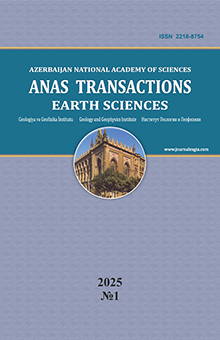Methodology and individual results of rank paleotectonic analysis in the identification of oil and gas accumulation zones in the platform region using the example of the Bukharo-Khiva region
Umurzakov R.A.1, Rabbimkulov S.A.2, Akhmedov Kh.R.3, Turaev Sh.A.1
1 Tashkent State Technical University, Uzbekistan: umrah@mail.ru, umruzok54@gmail.com
2 The Institute of Geology and Exploration of Oil and Gas Fields, University of Geological Sciences, Uzbekistan
3 Karshinsky Engineering and Economic Institute, Uzbekistan
Summary
A study of the use of paleotectonic analysis to determine the age of oil and gas trap structures is provided. It was noted that all previous paleotectonic studies were performed with data superimposed on each other related to factors of different scope and genesis, without taking into account the influence of their different rank components. This circumstance does not provide sufficient information about real processes. Therefore, the need to use the developed method of rank paleotectonic analysis is justified, the methodological basis of which is based on ideas about the system tectodynamic model of the tectonosphere. Maps of isopachites of tectonic movements of three ranks were built for five time intervals of Mesozoic-Cenozoic history: Early-Middle Jurassic, Late Jurassic, Cretaceous, Paleogene and Neogene-Quaternary. Seven categories of oil and gas accumulation zones are identified, differing in paleotectonic indicators.
Keywords: paleotectonic analysis, methodology, rank approach, oil and gas
REFERENCE
Нугманов А.Х. Условия накопления и особенности строения юрской карбонатной толщи Амударьинской синеклизы. Геология, геофизика и разработка нефтяных и газовых месторождений, Москва, No. 2, 2010, с. 15-18.
Николаев П.Н. Методика тектонодинамического анализа. Недра. Москва. 1992. 295 с.
Умурзаков Р.А. Деформационные режимы и палеотектонические напряжения низшего ранга западной части Тянь-Шаня в Мезозое – Кайнозое. Geodynamics & Tectonophysics, Vol. 14 (1), article 0687, 2023, DOI:10.5800/GT-2023-14-1-0687.
DOI: 10.33677/ggianasconf20230300040
